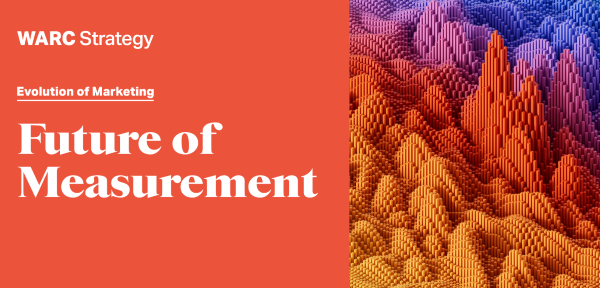The renaissance of Marketing Mixed Modelling | WARC | The Feed
The Feed
Read daily effectiveness insights and the latest marketing news, curated by WARC’s editors.
You didn’t return any results. Please clear your filters.

The renaissance of Marketing Mixed Modelling
Digital attribution has long held sway among marketers but marketing mixed modelling looks to be undergoing a renaissance, according to a new WARC report, The Future of Measurement.
Why it matters
New privacy laws and restrictions threaten current measurement models based on digital attribution, which uses individual level data to measure the impact of advertising exposure on sales. By contrast, Marketing Mixed Modelling (MMM) is considered a ‘privacy-first’ measurement technique because it relies on aggregated data from a range of sources to measure marketing effectiveness.
It also holds advantages over other measurement techniques in its ability to evaluate all media channels, to measure the long rather than short-term effects of advertising and to reveal the relationship between brand, price and promotions.
These developments, combined with recent thought leadership from measurement experts such as Les Binet and Dr Grace Kite, have helped transform perceptions around MMM, leading some to suggest the decades-old measurement technique is experiencing a resurgence.
Takeaways
- The shift to a privacy-first ecosystem is prompting a surge of interest in MMM, which doesn’t rely on cookies or user level data to measure marketing effectiveness
- Major technology players including Google, Meta and Amazon have launched their own MMM solutions and appear to be moving away from emphasising digital attribution as a means of measuring marketing effectiveness
- According to data from WARC’s Marketer’s Toolkit survey, around four in ten (41%) brands use MMM to evaluate the impact of their marketing investment, while a quarter (23%) claim to use no modelling at all
- Data from the Toolkit also shows that accurate measurement is a major concern for one quarter (25%) of brand marketers
The big idea
MMM has accrued a reputation for being somewhat unwieldy and expensive, but advances in technology and the growth of open-source and self-service solutions are helping to lower costs and barriers to entry for advertisers. Leading edge MMM enables them to go deeper, broader and faster than ever before while at the same time delivering greater precision and robustness than alternative methods.
The Future of Measurement is a WARC Strategy report covering the major trends shaping measurement over the coming 12 months. WARC subscribers can read the full report here. For non-subscribers a sample report is available to read here.
Email this content
